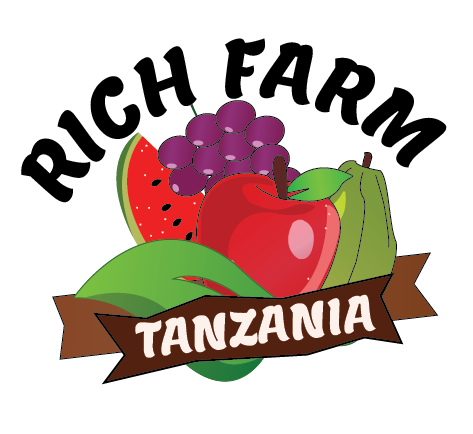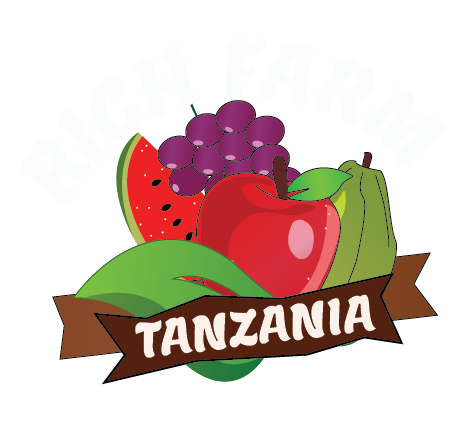nvestment in pawpaw farming is increasingly becoming attractive to farmers in Kenya who are keen to tap into new opportunities in the agribusiness sector. Well, it is not an entirely new crop but there are two main reasons why its farming has recently become more profitable: one, the increasing awareness on its nutritional and medicinal values among local consumers and two, the opening up of an attractive export market especially in Dubai and the larger Middle East.
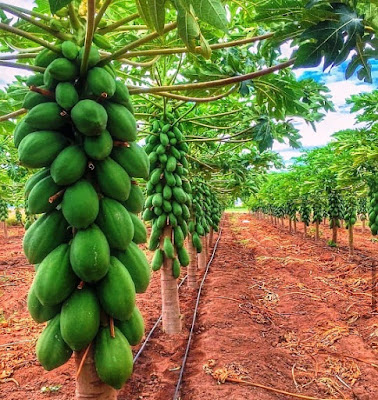
Since papaya (as it is commonly known worldwide) is our main crop at Rich Farm Kenya, we have been getting a lot of questions regarding investing in its commercial farming. We thought it would benefit you to share the most frequently asked question about this venture.
1. How long does pawpaw seed take to germinate?
The seeds will take about two to five weeks to germinate. To achieve faster and higher rate of germination, you should soak the seeds in an optimizer or a potassium nitrate fertilizer for at least 24 hours before sowing. These products can be bought at an agro-vet shop. Sow the seeds in a media that is not too compact. If you are using soil, ensure to mix it with 1 unit of sand for every 3 units of soil.
2. At what age do I transplant the seedlings?
Transplant the seedlings at two to three months after sowing the seeds. At this age, the plants will be about 15 cm tall and with at least 2 sets of leaves. If planted later than this, the seedlings are likely to suffer transplanting shock.
3. How long does it take for the tree to produce fruits?
It takes between 6 and 11 months from the date of sowing seeds to harvesting your first fruit. The climate is the major determinant of how long the tree takes to mature. In hot areas, you can get your first fruit as early as the 6th month while in cooler areas it can take as long as 11 months.
4. For how long will the tree be producing fruits?
Generally, papaya trees will keep producing fruits for 4 to 5 years. Some varieties such as the solo sunrise will live even longer than that but the yield will significantly reduce after the 5 year.
5. Do the trees need a lot of water?
Pawpaw trees do not need a lot of water to grow. In fact, they are drought tolerant. However, they will need to be irrigated during the dry seasons in order to grow faster and produce tasty fruits of a good size. While irrigating, though, you should keep in mind that the trees cannot tolerate waterlogged soils. If the soils are too wet even for 24 hours, the trees develop root rot and eventually die.
6. Are there male and female papaya trees?
There are actually 3 types of trees: male, female and hermaphrodite. The male trees produce many flowers whose sole purpose is to produce pollen for pollinating female flowers. The female trees produce flowers that are pollinated by the male flowers and develop fruits. The hermaphrodite trees are self pollinating and they all bear fruits.
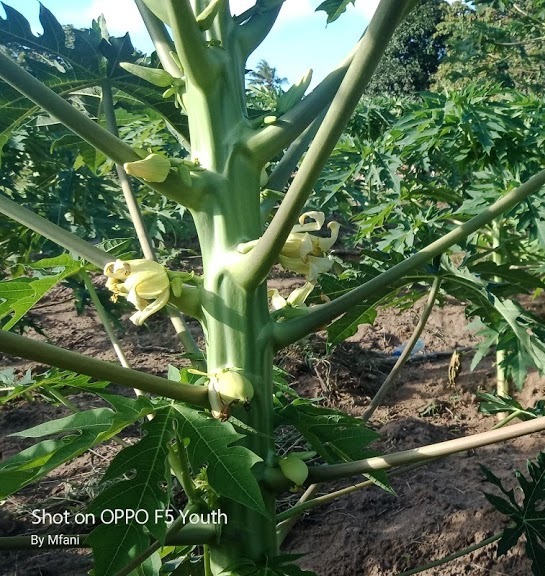
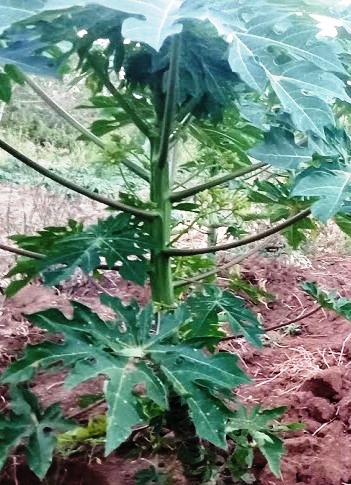
The major determinant of whether you will get male trees is variety. Varieties that are dioecious have separated male and female trees and you must have both in order to have good fruit setting. Varieties that are hermaphroditic are self pollinating and they all bear fruits successfully.
7. In which soils do they grow best?
Well drained sandy loam soils with high humus content are the best. As mentioned earlier, the trees are easily killed by excess water in the soil. That is why it is very important that the soils be well drained. For this reason, heavy black cotton and red clay soils are not ideal for Pawpaw farming. Where the soils are not too heavy, drainage can be improved by planting the trees on raised beds.
8. What is the best fertilizer?
The best fertilizer is one that will provide well balanced nutrients especially nitrogen (N), Phosphorous (P) and Potassium (K). Well composed farm yard or animal manure will often give enough of these. However, if you must use chemical based fertilizers, ensure that you do the first top dressing on the 3rd month after transplanting and then once every month thereafter. 100g of NPK 17:17:17 or 14:14:14 per tree will suffice. The application should be done around the tree at least 30cm from the base: all trees must be watered if it is not raining after fertilizer application.
9. How many trees fit in an acre?
One acre will accommodate 1100 trees with the common spacing of 2×2 meters. Dwarf varieties like Calina papaya IPB9, Red Lady and Red Royale can be spaced 1.5 meters from plant to plant and 2 meters between the lines giving a plant population of about 1345 trees per acre.
10. Which is the best pawpaw variety in Kenya?
IPB9 and Solo sunrise are the best varieties in the country. However the best will actually be determined by what your target market is. We also have many other new varieties in the country with impressive characteristics. Get a copy the comprehensive guide below to see a full description of all the varieties.

Here are articles we recommend that you read for further information on pawpaw farming in Kenya:
